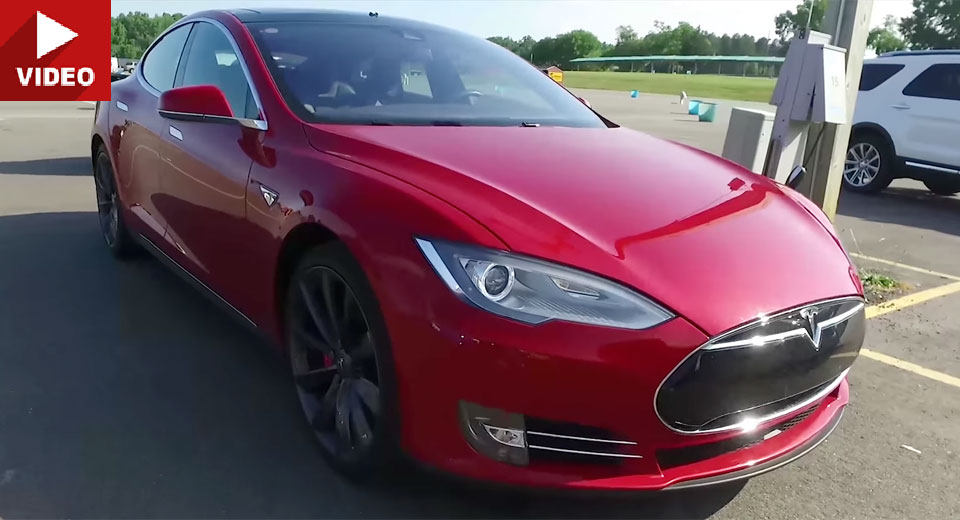Anything with a 0-60 time below 3 seconds is bound to make for one heck of a track car… right? Well, that may be the case with the highest order of supercars, but not so much with the Tesla Model S.
Among the vehicles Car and Driver took to Virginia International Raceway for last year’s Lightning Lap group test session was its long-term Model S P85D. But after the editors passed on the opportunity to set a lap time in the electric sedan, the internet expressed its scorn. So this year they brought it back, and took it out for a hot lap.
What they found came as little surprise: the Tesla is not designed as a track car, and is singularly ill-suited to the task. For one thing, it’s heavy – one of the heaviest vehicles they’ve ever included in the event. For another, Tesla fits its vehicles with a safety device that reduces output to half its full level after the battery and other components approach potentially unsafe temperatures.
Between those elements and a brake pedal that went soft (very soft) under hard braking, the Tesla performed rather less spectacularly than its straight-line acceleration figures might suggest. The result? A lap time of 3:17.4, matching that of the heavier Jeep Grand Cherokee SRT8 they tested in 2012, or roughly half a minute slower over the course of a single lap than the Porsche 918 Spyder that tops the leaderboards.



